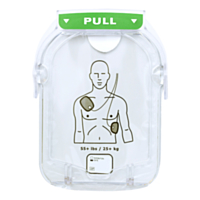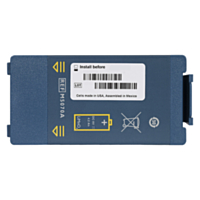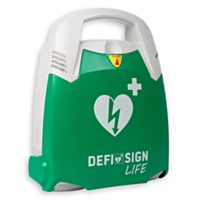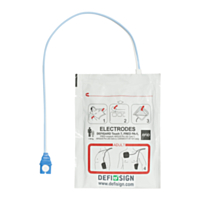Can a defibrillator be used multiple times?

An Automatic External Defibrillator (AED) stands as a critical life-saving apparatus employed in instances of sudden cardiac arrest. The correct utilization of a defibrillator possesses the potential to significantly increase the chances of saving a person's life. A pivotal question that merits attention in this blog article pertains to the reusability of defibrillators.
To begin, it is imperative to gain a fundamental understanding of the functionality of such device. This sophisticated medical device is capable of detecting cardiac arrhythmias and, when deemed necessary, administering a controlled electric shock with the primary objective of restoring the heart to a stable and regular rhythm. This intervention is executed through specialized electrodes that are affixed to the chest of the afflicted individual.
Can defibrillator electrodes be used multiple times?
Regrettably, the answer is in the negative. Electrodes are equipped with a self-adhesive gel that is pivotal for securing optimal adherence to the patient's skin. Following their initial use, these electrodes experience a decline in their adhesive properties. The gel tends to desiccate, leading to the accumulation of contaminants such as dirt and bacteria. This phenomenon not only compromises the defibrillator's capacity to perform accurate cardiac analysis but also diminishes the conductivity of the electric current.
Consequently, it is imperative to adhere to a strict policy of replacing the electrodes post-usage and upon reaching their designated expiration date. To guarantee the consistent readiness of your automated external defibrillator for emergency situations, it is imperative to meticulously follow the maintenance and replacement guidelines stipulated by the defibrillator’s manufacturer.
Do defibrillator batteries need to be replaced after a deployment?
It might become imperative to consider the replacement of the defibrillator's power source, specifically the battery, following its deployment. This is especially pertinent after multiple shocks have been administered, as the battery's capacity may have diminished to a point where it can no longer provide adequate power. The device will duly signal during its routine self-diagnostic assessment when the voltage of the battery falls below an acceptable threshold.
Can you use a defibrillator multiple times?
To address the query regarding the reusability of a defibrillator, the response is affirmative: a defibrillator can indeed be employed on multiple occasions. However, it is of paramount significance to consistently replace the electrodes and, when deemed necessary, the battery or batteries. Timely replacement of these components is instrumental in preserving the operational integrity of the device, and this meticulous maintenance practice holds the potential to substantially impact the efficacy of life-saving resuscitation efforts.
defibrillators that can only be used once
Shifting focus to an alternative aspect, it is pertinent to acknowledge the existence of single-use defibrillators currently available in the market. These devices, characterized by their compact form, relatively lower acquisition costs, and the absence of replaceable components, are not designed for prolonged use, typically having a lifespan of approximately two years. Once their intended use is fulfilled, these devices necessitate disposal.
Medisol, at present, does not offer such single-use devices within its product portfolio, owing to reservations concerning the product's durability and the overall total cost of ownership. It is worth noting that certain manufacturers of single-use defibrillators may institute reusability programs, albeit accompanied by supplementary expenses. Consequently, the annual cost associated with a single-use devices might surpass that of conventional AEDs.
We take pride in offering defibrillators in our product lineup that are designed for multiple uses and boast a longer operational life, ensuring lasting and cost-effective solutions for our clientele.



